Knowledge &
Resource Center
Whey Ingredients
MILK INGREDIENTS
CARBOHYDRATE INGREDIENTS
milkfat Ingredients
Beta-lactoglobulin (beta-lac) Standard
v 2.0 | Effective 07/03/2023
Product Definition
Bovine Beta-Lactoglobulin is a protein isolated from either milk or fresh wheyLiquid obtained from cheese manufacture.. A combination of different protein isolation technologies may be utilized for purification of the protein. Beta-Lactoglobulin complies with all provisions of the U.S. Federal Food, Drug, and Cosmetic Act.
Standard: Printable PDF
Composition
| Beta-Lactoglobulin WPI | Beta-Lactoglobulin WPC | ||||
|---|---|---|---|---|---|
| Parameter | Units of Measure | Typical Values | Limits | Typical Values | Limits |
| Protein | %, db | 90 - 92 | 89.5 minimum | 34 - 80 | 33. 5 minimum |
| Beta-lactoglobulin | % (1) | -- | 70 minimum | -- | 60 minimum |
| Fat | % | 0.5 - 1.0 | 1.5 maximum | -- | 10 maximum |
| Ash | % | 2.0 - 3.5 | -- | -- | 10 maximum |
| Lactose | % | 0.5 - 1.0 | -- | -- | 60 maximum |
| Total moisture | % | 4.0 - 5.0 | 6.0 maximum | 4.0 - 5.0 | 6.0 maximum |
(1) Beta-lactoglobulin units of measure are as a percentage of the protein content.
Other Characteristics
Physico-chemical Properties
| Parameter | Units of Measure | Limits |
|---|---|---|
| Scorched particles | mg/25g | 15.0 maximum |
| pH | -- | 2.5 - 7.5 |
| Color | visual | white to light cream |
| Flavor | sensory | bland, clean |
Microbiological Analysis
| Parameter | Units of Measure | Limits |
|---|---|---|
| Standard plate count | CFU/g | 30,000 maximum |
| Yeast and mold | CFU/g | 100 maximum |
| Coliforms (2) | CFU/g | 10 maximum |
| Enterobacteriaceae (2) | CFU/g | 10 maximum |
| Salmonella | CFU/sample (3) | not detected |
(2) The food industry is trending toward Enterobacteriaceae (“EB”) as the most commonly used category of indicator organisms for gauging general process sanitation. For compliance with this Standard, either coliformsRod shaped, Gram negative bacteria that are found in the digestive tract of warm-blooded animals, and in plant and soil material. Coliforms often are used as an indicator organism for possible fecal contamination. See also total and fecal coliforms. and/or EB shall be utilized, at the discretion of the manufacturer.
(3) Typical minimum sample size for Salmonella testing is 25 g, but the exact sample size and methodology is left to the discretion of the manufacturer.
Permissible Additives
Beta-Lactoglobulin may be pHA measure of the acidity or alkalinity of a material. The pH scale ranges from 0 (acid) to 14 (alkaline) with 7 considered neutral. pH is a measure of the concentration of hydrogen ions and is defined as the negative log of the hydrogen ion concentration. adjusted with an appropriate mineral or organicRegulations that refers to the way agricultural products are grown and processed. Regulations vary from country to country but in the U.S., organic crops must be grown without the use of synthetic herbicides, pesticides and fertilizers or bioengineered genes. acid or base. Any pHA measure of the acidity or alkalinity of a material. The pH scale ranges from 0 (acid) to 14 (alkaline) with 7 considered neutral. pH is a measure of the concentration of hydrogen ions and is defined as the negative log of the hydrogen ion concentration. adjustment agent used for this purpose shall be food grade and shall be used in accordance with U.S. current Good Manufacturing Practices and in accordance with its GRASGenerally recognized as safe status, where applicable.
Methods of Analysis
| Criteria | Reference Method |
|---|---|
| Protein | AOAC 991.20 (N x 6.38) |
| Beta-lactoglobulin | HPLC |
| Fat | AOAC 989.05 |
| Ash | AOAC 942.05 |
| Lactose | ISO 22662 / IDF 198 |
| Total Moisture | AOAC 925.45 |
| Scorched particles | ADPI |
| pH | USDA |
| Microbiological tests | FDA BAM |
Product Labeling
Recommended identifications:
Beta-Lactoglobulin
Whey ProteinProtein in milk that remains in water phase after casein precipitates. Concentrate
Whey ProteinProtein in milk that remains in water phase after casein precipitates. Isolate
Beta-Lactoglobulin is typically used in high protein beverages; ice cream; frozen yogurt; beverages; salad dressings; process cheese; gels; protein bars; and others.
Product should be stored, shipped, and utilized according to the manufacturer’s established recommendations. As guidance, product should be stored and shipped in a cool, dry environment with temperature below 80°F and relative humidity below 65%. Stocks should be rotated and utilized in accordance with the manufacturer’s established date of expiration or retest.
Multiwall kraft bags with polyolefin inner liner, or other suitable closed containers (e.g., totes) are typical.
In no event shall ADPI be liable for any direct, indirect, incidental, special, exemplary, or consequential damages (including, but not limited to: the need to procure substitute goods or services; loss of use, data, or profits; or business interruption) however caused and on any theory of liability, whether in contract, strict liability, or tort (including negligence or otherwise) arising in any way out of the publication, use of, or reliance upon any standard, even if advised of the possibility of such damage and regardless of whether such damage was foreseeable.
